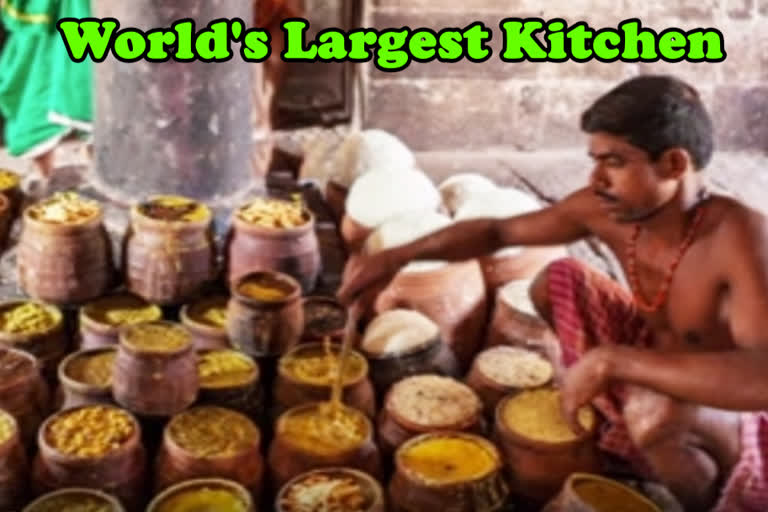Puri (Odisha): The Jagannath temple in Odisha's Puri is one of the 4 major pilgrimages in India. It houses Lord Jagannath, one of the most revered Gods in the Hindu religion. The auspicious Lord Jagannath Yatra held every year is a centre of awe for people across the country. The rituals of Lord Jagannath are related to our ways of life. The Lord is adored as the divine head of every Hindu family.
One among the major attractions at the yearly festival is the Mahaprasad offered before deities Lord Jagannath, Devi Subhadra and Lord Balabhadra.
The Sriksetra Puri Dham has gained prominence as a Holy place. The Mahaprasad (offering) of Lord Jagannath, the presiding deity is world-famous. While the offerings for the deities in other temples in India are called prasad, those made for Jagannath are called Mahaprasad. Puri has the unique custom of discarding racism, casteism or the stigma of leftover when people share Mahaprasad together.
The Jagannath Temple has a lot of mysteries surrounding it, the majority of them associated with the temple kitchen.
Considered to be the largest kitchen in the world, a variety of at least 56 meals, or 'bhoga' in Odia, are cooked in the kitchen every day for the deities, over wood-fire and in earthen pots. The sacred “mahaprasad” then feeds a staggering one lakh people a day.
Around 2,400 cooks are engaged round the clock, cooking the Mahaprasad on 752 small ovens (Chulhis).
Lord Jagannath, fondly referred to as 'Jaga Kalia' is the main deity at the temple. He is fed with sixty 'Pautis' (an ancient measurement) of the Mahaprasad (consisting of 56 meals).
Read: Know all about Lord Jagannath’s annual visit to Gundicha temple
It would be interesting to note here that the process of cooking as done in the kitchen has some peculiarities. In the same oven, nine earthen pots are placed and cooking is done simultaneously. According to tantric texts, the number nine and multiplication of nine constitute the glorious features of Mahaprasad.
These meals are cooked over wood-fire in earthen pots known as kuduas placed one above the other. The sacred Mahaprasad is served to around one lakh people a day after being offered to the deities and surprisingly, never falls short for them.
The kuduas are placed on separate Chulhis where the rice gets cooked as part of ritualistic fire sacrifice. Surprisingly, the rice in the pots placed in the upper layer always gets cooked first.
After being offered before the trinity, it is served to the devotees at the Ananda Bazar, an eating area within the temple premise. The Ananda Bazar is also said to be the largest eating area across the world, where devotees from all caste, creed and religion receive the blessings of Lord Jagannath in the form of Mahaprasad.
An astonishing story associated with the Mahaprasad is that not a single grain ever remains uncooked, and even if it does, it is said to get cooked by itself before being served before the deities.
The Mahaprasad is said to carry the blessings of Goddesses Annapurna and Lakshmi, making it even more auspicious. It is also said to be of high nutritive value, catering to the physical health of devotees.
At a time Mahaprasad is consumed by large groups of people, caste distinction is thrown into the air albeit for a short time. At that moment caste difference is forgotten in creed, deed and word, people eat and feed this holy cooked rice and take away some rice from other's mouths and eat it themselves considering this act as a holy and sanctifying ritual.
The mysteries of the Jagannath temple never have and still do not cease to exist. True or not true, every devotee who relishes the Mahaprasad is said to free himself from worldly ties and head a step closer towards salvation.
ALSO READ: 'Patali Srikhetra', where the Holy Trinity idols were kept hidden for 144 years



